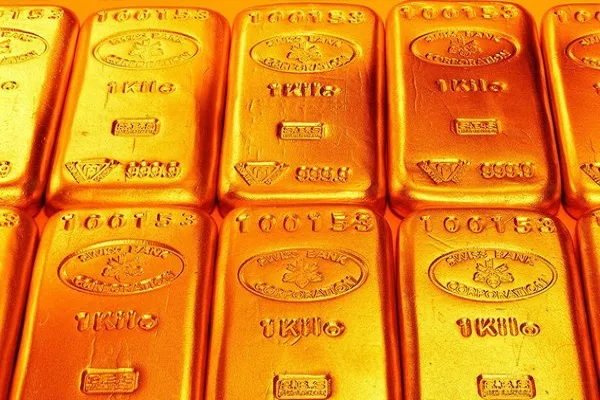In the world of fine jewelry and investment-grade precious metals, authenticity and quality are paramount. Consumers and investors rely on accurate markings and certifications to determine the value and purity of gold jewelry and bullion. One of the most sought-after markings is “18K,” indicating an item’s composition of 75% pure gold. However, the market has been plagued by counterfeiters attempting to pass off fake gold as genuine. The question arises: Can fake gold be stamped as 18K? This article aims to delve into the complexities of counterfeit gold and how these deceptive practices are undermining trust in the precious metals industry.
Understanding the Composition of 18K Gold
Before delving into the issue of counterfeit gold, it is crucial to understand the composition of 18K gold. Genuine 18K gold consists of 75% pure gold alloyed with other metals such as silver, copper, and zinc. These additional metals enhance the gold’s durability and alter its color, creating variations like white, rose, and yellow gold. The remaining 25% of the alloy consists of these metals, which are carefully chosen to balance the metal’s strength, color, and malleability. This specific composition results in a hallmark of “750” stamped on the jewelry, indicating 75% pure gold content.
The Challenge of Counterfeit Gold
Counterfeiters have sought to exploit the allure of gold by producing fake items that resemble the real thing. One common strategy is to create items that look authentic at first glance but are actually made from base metals or low-purity gold alloys. These counterfeit items are then stamped with markings indicating higher purity levels, such as “18K,” to deceive consumers and profit from their lack of expertise.
Can Fake Gold be Stamped as 18K?
Technically, counterfeiters can stamp fake gold with markings like “18K,” but there are significant limitations and risks involved:
1. Appearance:
Counterfeiters often mimic the appearance of genuine gold, using techniques like gold plating to achieve a convincing color. However, upon closer inspection, counterfeit gold may exhibit inconsistencies in color, texture, and weight that trained experts can detect.
2. Hallmarks and Regulations:
Authenticating bodies and hallmarking authorities are established to ensure the quality and purity of precious metals. In many countries, jewelry items must meet specific standards before receiving hallmarks. Counterfeiters attempting to stamp fake gold as 18K face stringent regulations and the risk of legal consequences if caught.
3. Metal Composition Testing:
Professional jewelers and appraisers use non-destructive testing methods, such as X-ray fluorescence (XRF) and fire assay, to accurately determine the composition of a piece of gold. These tests can identify the presence of base metals and determine whether the item is genuinely 18K gold.
4. Consumer Awareness:
As consumer education improves, buyers are becoming more vigilant when purchasing gold jewelry. They seek reputable sources, demand certifications, and are increasingly aware of the telltale signs of counterfeit gold, such as discrepancies in weight and incorrect hallmarks.
5. Erosion of Trust:
Counterfeit gold not only undermines the value of genuine gold but also erodes trust within the precious metals market. Repeated incidents of purchasing counterfeit items can lead to a decrease in consumer confidence and tarnish the reputation of legitimate dealers.
Preventing Counterfeit Gold
To combat the rise of counterfeit gold and maintain the integrity of the precious metals market, several measures can be taken:
Education: Educating consumers about the characteristics of genuine gold, hallmarking standards, and common counterfeit tactics can empower them to make informed purchasing decisions.
Third-Party Certifications: Reputable jewelers and dealers often provide third-party certifications, verifying the authenticity and purity of their gold products. These certifications can alleviate consumer concerns and provide an additional layer of trust.
Purchase from Reputable Sources: Buying gold from established and reputable dealers reduces the risk of purchasing counterfeit items. Established sellers are more likely to adhere to industry standards and offer genuine products.
Physical Examination: Conducting a thorough physical examination of the gold item can reveal discrepancies in weight, color, and texture. This examination, coupled with professional testing, can help identify counterfeit gold.
Hallmark Verification: Consumers should familiarize themselves with hallmarking regulations in their region and verify the authenticity of hallmarks on gold items.
Conclusion
While counterfeiters may attempt to stamp fake gold as 18K to deceive consumers, a combination of technological advancements, consumer education, and industry regulations have made it increasingly difficult for these deceptive practices to go unnoticed. The value and allure of gold persist, but as awareness grows, counterfeiters face greater challenges in their efforts to undermine the integrity of the precious metals market. By staying informed, seeking certifications, and making purchases from reputable sources, consumers and investors can contribute to the safeguarding of the industry’s authenticity and trust.


